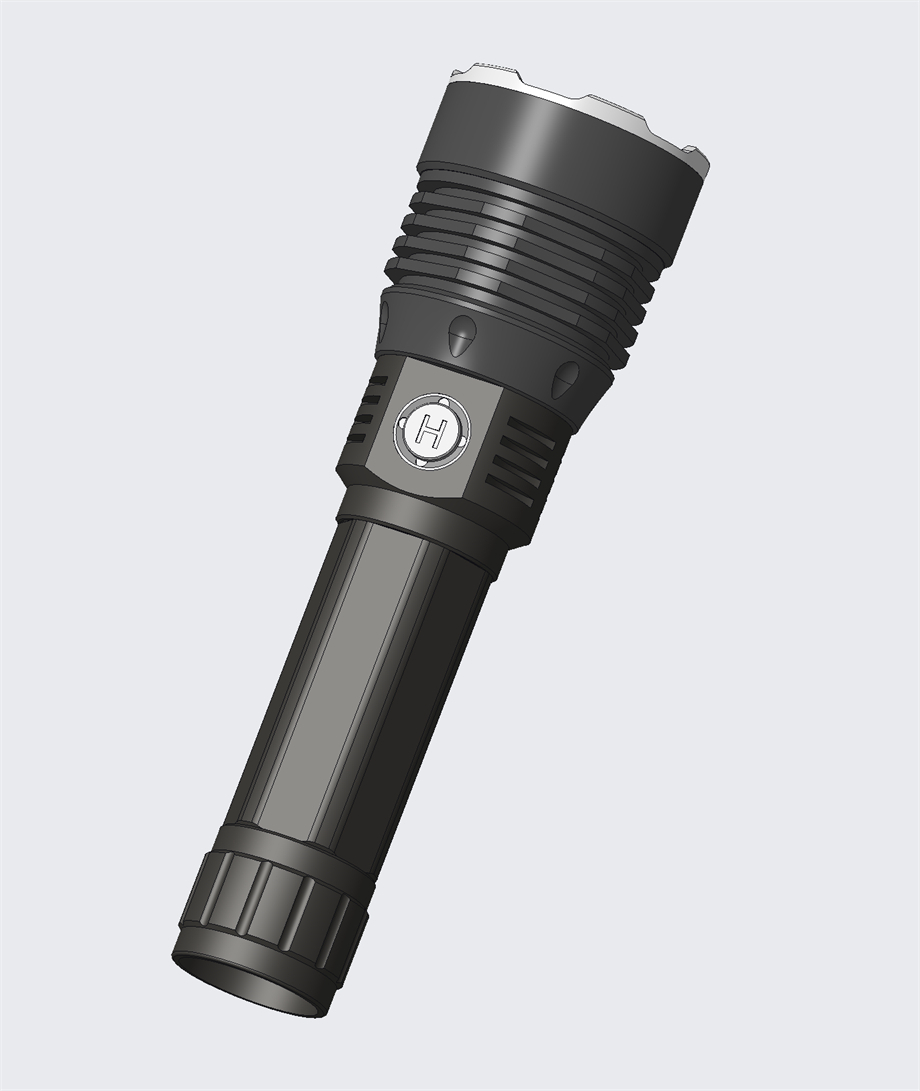The Impact of Environmental Regulations on Flashlight Manufacturing in Western Europe

The Impact of Environmental Regulations on Flashlight Manufacturing in Western Europe is significant, as these regulations play a crucial role in shaping the industry. They push manufacturers to adopt sustainable practices and reduce their environmental footprint. However, compliance with these regulations presents significant challenges. Companies must navigate complex regional standards and adapt to rapid regulatory changes. Additionally, testing and certification processes impose financial burdens. These hurdles demand proactive strategies to ensure adherence. Despite these difficulties, manufacturers can seize opportunities to innovate and enhance their competitiveness. By embracing sustainability, they can align with consumer expectations and regulatory demands.
Key Takeaways
Rules about the environment make flashlight makers use greener methods.
Following rules like RoHS and WEEE means using safe materials and making products easy to recycle.
Using energy-saving ways to make flashlights can save money and help compete better.
Following rules early earns customer trust and allows selling in more countries.
Working with green suppliers helps follow rules and shows care for the planet.
Key Environmental Regulations Shaping the Industry

Environmental regulations play a pivotal role in shaping flashlight manufacturing in Western Europe. These regulations aim to reduce environmental harm while promoting sustainability. Manufacturers must adapt to meet these evolving standards, which influence production processes, material selection, and waste management practices.
Carbon Emissions Standards
Carbon emissions standards significantly impact flashlight manufacturing. These standards encourage manufacturers to adopt eco-friendly materials and energy-efficient production methods. By reducing energy consumption, companies can lower greenhouse gas emissions and align with sustainability goals. Additionally, waste reduction and recycling practices contribute to minimizing landfill waste while enhancing product durability. These measures not only ensure compliance but also support a sustainable production process.
Material Restrictions and Sustainability
Material restrictions under environmental regulations require manufacturers to avoid hazardous substances. For instance, the Restriction of Hazardous Substances (RoHS) directive prohibits the use of materials like lead, mercury, and cadmium in electronic devices. This regulation compels manufacturers to select components that comply with these restrictions, ensuring sustainable flashlight production. By adhering to these standards, companies can reduce their environmental footprint and meet consumer expectations for eco-friendly products.
Common restricted materials include:
Lead and mercury
Cadmium and hexavalent chromium
Polybrominated biphenyls (PBB) and polybrominated diphenyl ethers (PBDE)
Compliance with these restrictions not only protects the environment but also enhances product safety and marketability.
Waste Management and Recycling Policies
Waste management and recycling policies are critical for flashlight manufacturers. The Waste Electrical and Electronic Equipment (WEEE) directive mandates proper recycling and disposal of electronic products. This regulation requires manufacturers to design products that are easy to disassemble and recycle. Similarly, the RoHS directive ensures environmental protection by restricting hazardous materials in electronic devices. These policies encourage manufacturers to adopt circular economy principles, reducing waste and conserving resources.
Regulation | Description |
|---|---|
RoHS | Restricts hazardous materials in electronic devices, ensuring environmental protection and compliance with global standards. |
WEEE | Mandates proper recycling and disposal of electronic products, requiring manufacturers to design for disassembly and recycling. |
By integrating these practices, manufacturers can achieve compliance while contributing to a more sustainable industry.
New EU Regulations Impacting Flashlight Manufacturing
The European Union (EU) continues to introduce new regulations to address environmental concerns. These policies directly impact flashlight manufacturing by setting stricter standards for production, materials, and energy efficiency. Manufacturers must stay informed and adapt quickly to remain compliant.
1. The European Green Deal and Its Influence
The European Green Deal aims to make Europe climate-neutral by 2050. This initiative introduces policies that require manufacturers to reduce carbon emissions and adopt sustainable practices. Flashlight manufacturers must now focus on energy-efficient designs and renewable energy sources during production. These changes align with the EU’s goal of reducing environmental harm.
Tip: Companies that invest in renewable energy and eco-friendly technologies early can gain a competitive edge in the market.
2. The Eco-Design Directive
The Eco-Design Directive sets minimum energy efficiency requirements for products. Flashlights must now meet stricter energy consumption standards. Manufacturers must redesign products to use less power while maintaining performance. This regulation encourages innovation in battery technology and LED efficiency.
3. Extended Producer Responsibility (EPR)
The EPR policy holds manufacturers accountable for the entire lifecycle of their products. Flashlight companies must ensure proper recycling and disposal of their products. This includes designing flashlights that are easier to disassemble and recycle. Non-compliance can result in fines or restricted market access.
Regulation | Key Requirement | Impact on Manufacturers |
|---|---|---|
European Green Deal | Reduce carbon emissions | Transition to sustainable production |
Eco-Design Directive | Meet energy efficiency standards | Redesign products for lower energy use |
Extended Producer Responsibility (EPR) | Ensure product recycling and disposal | Invest in recyclable designs |
These new EU regulations push flashlight manufacturers to innovate and adopt sustainable practices. Companies that embrace these changes can improve their market position and contribute to a greener future.
The Impact of Environmental Regulations on Flashlight Manufacturing

Changes in Production Processes
Environmental regulations have driven significant changes in how flashlights are produced. Manufacturers now prioritize eco-friendly materials to comply with directives like RoHS and REACH. These regulations restrict hazardous substances and encourage recycling. Many companies have adopted energy-efficient production methods to reduce their carbon footprints. These methods not only align with environmental goals but also lower operational costs.
The WEEE Directive has further influenced production by requiring products to be designed for easy disassembly and recycling. This shift ensures that flashlights meet consumer expectations for sustainability. For example, manufacturers now focus on modular designs that simplify repairs and recycling. These changes reflect the growing importance of sustainability in the industry.
Key changes in production processes include:
Adoption of eco-friendly materials.
Implementation of energy-efficient manufacturing techniques.
Designing products for disassembly and recycling.
Challenges in Material Sourcing
Sourcing materials under strict environmental regulations presents several challenges for flashlight manufacturers. Companies must ensure compliance with safety standards, which vary across regions. Materials must also withstand harsh conditions without compromising safety or performance. These constraints often limit design flexibility and increase costs.
Challenge | Description |
|---|---|
Regulatory Compliance | Adhering to varying regional safety standards. |
Material Selection | Ensuring materials are durable and environmentally safe. |
Design Constraints | Balancing performance with energy and thermal limitations. |
Cost | Managing high material costs and rigorous testing requirements. |
These challenges require manufacturers to invest in research and development to find innovative solutions. For instance, companies are exploring alternative materials that meet both performance and environmental standards.
Economic Implications for Manufacturers
The impact of environmental regulations extends to the economic aspects of flashlight manufacturing. Compliance often involves significant upfront investments in new technologies and materials. For small and medium-sized enterprises, these costs can be particularly burdensome. However, adopting sustainable practices can also lead to long-term savings. Energy-efficient production methods reduce utility costs, while recyclable designs lower waste management expenses.
Non-compliance carries financial risks, including fines and restricted market access. On the other hand, companies that embrace sustainability can gain a competitive edge. Consumers increasingly prefer eco-friendly products, creating opportunities for manufacturers to capture market share. By aligning with environmental goals, businesses can enhance their reputation and profitability.
Note: Early adoption of sustainable practices can mitigate economic risks and unlock growth opportunities.
Operational Adjustments to Meet Compliance
Flashlight manufacturers in Western Europe have made significant operational adjustments to comply with environmental regulations. These changes ensure that products meet strict standards while minimizing environmental harm. Companies have adopted various strategies to align their operations with compliance requirements.
One major adjustment involves product redesign. Manufacturers often reengineer components to meet updated standards. This process includes sourcing materials that comply with regulations like RoHS and REACH. For example, companies now use eco-friendly materials to reduce environmental impact. These redesigns not only ensure compliance but also improve product sustainability.
Supplier compliance has become another critical focus. Manufacturers rely on suppliers to provide materials that meet international standards. To achieve this, they conduct rigorous quality checks and require certifications. This approach ensures that all components used in production adhere to environmental guidelines.
Many companies have also embraced advanced technology to streamline compliance efforts. Digital tools and compliance management software help track updates to regulations. These tools simplify the process of meeting new standards and reduce the risk of non-compliance. Automated testing systems have further enhanced accuracy. These systems verify that products meet international standards, reducing human error and saving time.
Sustainable practices have become a cornerstone of operational adjustments. Manufacturers now prioritize eco-friendly production methods. These methods include using renewable energy sources and reducing waste during manufacturing. By adopting these practices, companies align with environmental goals while maintaining efficiency.
Adjustment Type | Description |
|---|---|
Product Redesign | Non-compliant products often require redesigns to meet updated standards, involving reengineering components and sourcing compliant materials. |
Supplier Compliance | Manufacturers rely on suppliers to provide materials that meet international standards, necessitating rigorous quality checks and certifications. |
Sustainable Practices | Many companies now use eco-friendly materials to reduce environmental impact while adhering to regulations like RoHS and REACH. |
Advanced Technology | Digital tools and compliance management software help manufacturers track updates to standards, simplifying the compliance process. |
Automated Testing | Manufacturers increasingly use automated testing tools to ensure products meet international standards, enhancing accuracy and reducing human error. |
These operational adjustments highlight the impact of environmental regulations on flashlight manufacturing in Western Europe. By adopting these measures, companies can remain compliant, reduce environmental harm, and improve their market position.
Strategies for Compliance and Innovation
Transitioning to Sustainable Materials
Flashlight manufacturers in Western Europe are increasingly adopting sustainable materials to meet environmental regulations. This shift reduces environmental harm and aligns with consumer demand for eco-friendly products. Companies now utilize recycled metals and biodegradable plastics in their designs. These materials lower the environmental impact of production and disposal. Sustainable packaging has also gained popularity. By minimizing non-recyclable materials, manufacturers appeal to environmentally conscious buyers.
Collaboration with sustainable suppliers plays a crucial role in this transition. Ethical sourcing ensures that materials meet environmental standards. Manufacturers also implement waste reduction strategies across their supply chains. These efforts minimize resource wastage and enhance operational efficiency. Transitioning to sustainable materials not only ensures compliance but also strengthens a company’s commitment to sustainability.
Enhancing Energy Efficiency in Manufacturing
Energy efficiency has become a cornerstone of compliance strategies for flashlight manufacturers. Companies adopt renewable energy sources like solar and wind power to reduce energy expenses. Streamlined transportation routes further minimize fuel consumption. These measures lower greenhouse gas emissions and improve overall efficiency.
Production processes have also undergone significant changes. Manufacturers now use energy-efficient methods in material mining and assembly. LED technology has become a standard in flashlight design. LEDs consume less energy during use, enhancing the product’s sustainability.
Energy-Efficient Practices | Benefits |
|---|---|
Reduce energy use during production | Lowers carbon footprint |
Apply energy-efficient mining methods | Minimizes environmental harm |
Use LED technology in flashlights | Enhances operational efficiency |
By prioritizing energy efficiency, manufacturers not only comply with regulations but also reduce operational costs.
Leveraging Green Certifications for Market Advantage
Green certifications provide flashlight manufacturers with a competitive edge. These certifications demonstrate a company’s commitment to sustainability. They enhance brand reputation by associating products with eco-friendly practices. Consumers often perceive certified products as higher quality, increasing their market appeal.
Compliance with sustainability standards also leads to cost savings. Energy-efficient production methods and durable materials reduce long-term expenses. Companies that obtain green certifications position themselves as industry leaders. This strategy not only boosts market share but also fosters trust among environmentally conscious consumers.
Tip: Manufacturers can use green certifications as a marketing tool to highlight their commitment to sustainability.
Collaborating with Eco-Friendly Suppliers
Collaborating with eco-friendly suppliers has become essential for flashlight manufacturers aiming to meet environmental regulations. These partnerships help companies source sustainable materials, reduce their environmental impact, and maintain compliance with strict standards. By working closely with suppliers, manufacturers can align their operations with sustainability goals while enhancing product quality.
To identify reliable eco-friendly suppliers, manufacturers should look for certifications such as ISO 14001 or Energy Star ratings. These certifications indicate that a supplier follows environmentally responsible practices. Building strong relationships with these suppliers requires open communication and trust. Clear expectations and shared values create a foundation for long-term collaboration.
Manufacturers should define specific sustainability criteria when selecting suppliers. These criteria should align with the company’s environmental goals. For example, a flashlight manufacturer might prioritize suppliers that use recycled metals or biodegradable materials. Setting these standards ensures that all sourced components meet regulatory requirements.
Evaluating the quality and sustainability of materials is another critical step. Manufacturers should inspect materials and verify green claims to avoid non-compliance. Conducting on-site audits provides transparency and confirms that suppliers follow sustainable practices. These audits also strengthen trust between manufacturers and suppliers.
Establishing exclusive agreements with eco-friendly suppliers can further enhance partnerships. Negotiating terms for repeat business encourages suppliers to prioritize the manufacturer’s needs. This approach fosters collaboration and ensures a consistent supply of sustainable materials.
Tip: Partnering with certified green suppliers not only ensures compliance but also boosts a company’s reputation among environmentally conscious consumers.
By collaborating with eco-friendly suppliers, flashlight manufacturers can meet regulatory demands, reduce environmental harm, and gain a competitive edge in the market.
Broader Implications for the Flashlight Industry
Competitive Advantages of Early Compliance
Early compliance with environmental regulations offers flashlight manufacturers several advantages. Companies that proactively align with these standards enhance consumer trust and strengthen their brand reputation. This approach also opens doors to international markets, where stringent environmental requirements often dictate product eligibility. By adopting sustainable practices early, manufacturers can optimize production processes, leading to cost savings and reduced risks of penalties.
For instance, energy-efficient methods and eco-friendly materials lower operational expenses while meeting regulatory demands. Early adopters also position themselves as industry leaders, gaining a competitive edge over slower-moving competitors. This proactive strategy not only ensures compliance but also aligns with the growing consumer preference for sustainable products.
Risks and Consequences of Non-Compliance
Failing to comply with environmental regulations can have severe consequences for flashlight manufacturers. Non-compliance often results in financial, reputational, and operational setbacks.
Financial Implications | Description |
|---|---|
Litigation Costs | Lawsuits due to non-compliance can lead to significant legal expenses. |
Reputational Damage | Negative media attention erodes consumer trust and reduces market share. |
Increased Insurance Premiums | Non-compliance raises insurance costs, impacting overall profitability. |
Non-compliant products also pose safety risks, such as overheating or electrical shocks. Faulty designs can endanger users, especially in hazardous environments. These risks not only harm consumers but also expose manufacturers to liability claims and product recalls. The long-term impact of non-compliance can cripple a company’s ability to compete in the market.
Long-Term Benefits of Sustainability in Manufacturing
Sustainability offers flashlight manufacturers a pathway to long-term success. By adopting energy-efficient processes and sourcing eco-friendly materials, companies reduce waste and optimize resource use. These practices create a resilient business model capable of adapting to market changes.
A survey revealed that 73% of CEOs believe sustainability builds trust and enhances reputation. This trust translates into stronger customer loyalty and increased sales. Sustainable practices also ensure regulatory compliance, reducing the risk of penalties. Over time, these efforts contribute to a more stable and profitable operation.
Sustainability not only benefits the environment but also secures the industry's future. Manufacturers that prioritize sustainable practices position themselves as leaders in innovation and responsibility. This approach ensures long-term viability while meeting the evolving demands of consumers and regulators alike.
The impact of environmental regulations on flashlight manufacturing in western Europe has reshaped the industry. These policies drive manufacturers to adopt sustainable practices and innovate production methods. Proactive compliance ensures businesses remain competitive while meeting consumer expectations for eco-friendly products.
Manufacturers should prioritize sustainability as a strategic goal. Using recycled metals and biodegradable plastics reduces environmental harm. Energy-efficient processes and waste reduction strategies lower carbon footprints. Collaborating with ethical suppliers and adopting green technologies enhances compliance. Engaging employees in sustainability initiatives fosters a culture of responsibility. These actions position companies as leaders in a greener future.
FAQ
What are the most common environmental regulations affecting flashlight manufacturing?
Manufacturers face regulations like RoHS, WEEE, and the Eco-Design Directive. These rules restrict hazardous materials, mandate recycling, and set energy efficiency standards. Compliance ensures reduced environmental harm and product safety.
How do environmental regulations impact flashlight design?
Regulations require manufacturers to use eco-friendly materials and energy-efficient components. Flashlights now feature modular designs for easier recycling. These changes improve sustainability while meeting consumer expectations.
Why is early compliance with regulations important?
Early compliance reduces the risk of penalties and enhances market access. Companies that adopt sustainable practices early gain a competitive edge and build consumer trust. This approach also lowers long-term operational costs.
What challenges do manufacturers face when sourcing materials?
Manufacturers must find materials that meet strict environmental standards. These materials must also perform well under harsh conditions. Limited availability and high costs add to the complexity of sourcing.
How can manufacturers benefit from green certifications?
Green certifications improve brand reputation and attract eco-conscious consumers. Certified products often command higher market value. These certifications also demonstrate a company’s commitment to sustainability, boosting its competitive position.
Tip: Highlight certifications in marketing materials to appeal to environmentally aware buyers.
See Also
Essential Factors to Consider When Choosing Flashlight Suppliers
Comprehensive Overview of Flashlight Production in China
Understanding Flashlight Manufacturing Techniques and LED Innovations
About US
Follow Us
Hello,Friend,
I am Mary from Helius, we are manufacturer of LED lighting products with more than a decade of experiences.
We offer hot selling products in market and guarantee the quality with competitive cost.
Let’s have more discussion on your inquiry.
Or you can reach out me via what’s up/tele gram +8618123952945 if it’s favorable to you.
Address
4th Floor, Building A16, Intelligent terminal industrial park of Silicon Valley, Dafu Industrial Zone,Guanlan, Shenzhen, 518110 China
Contacts
mary@heliuslights.com
heliuslight04@hotmail.com
+0086 18123952945
